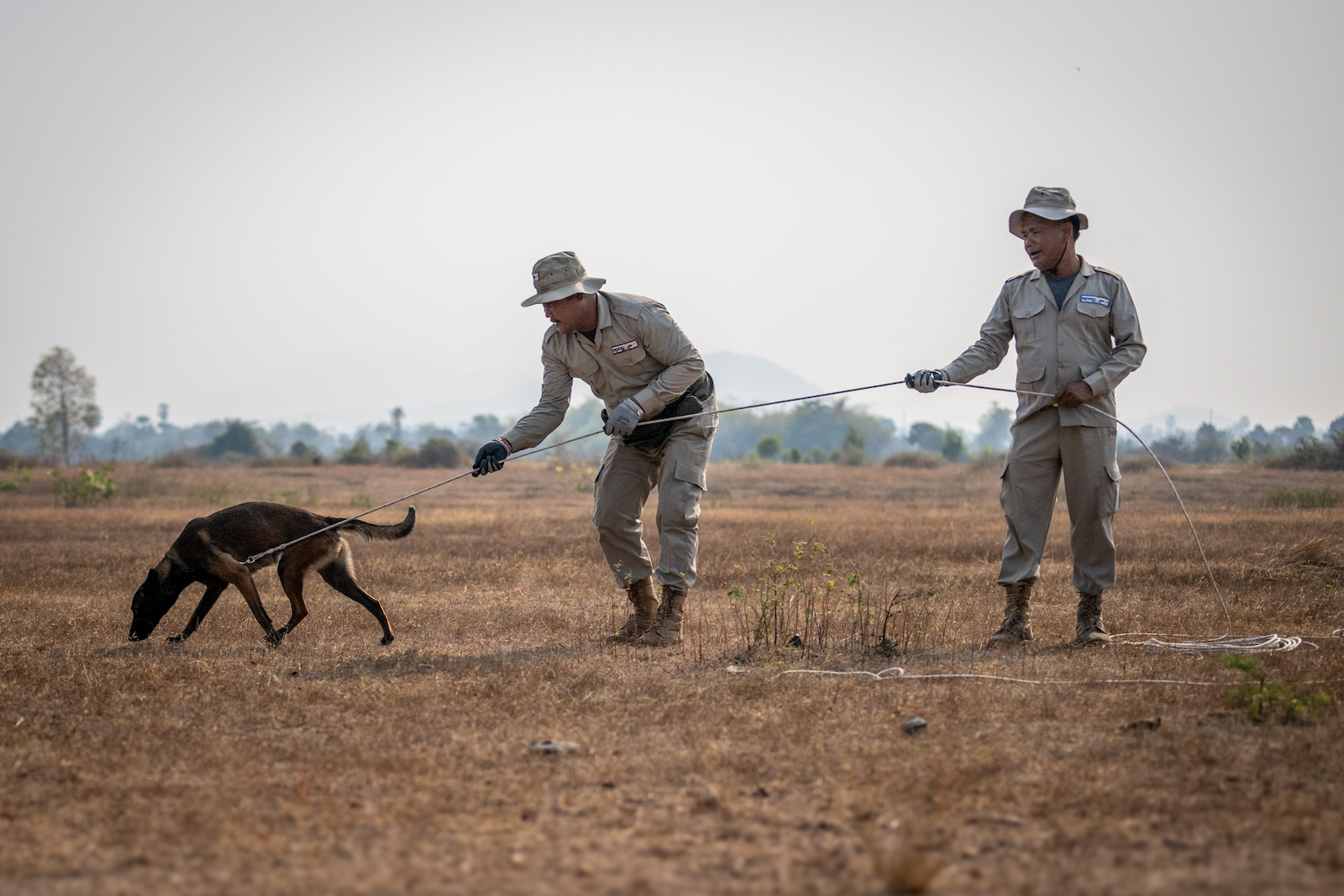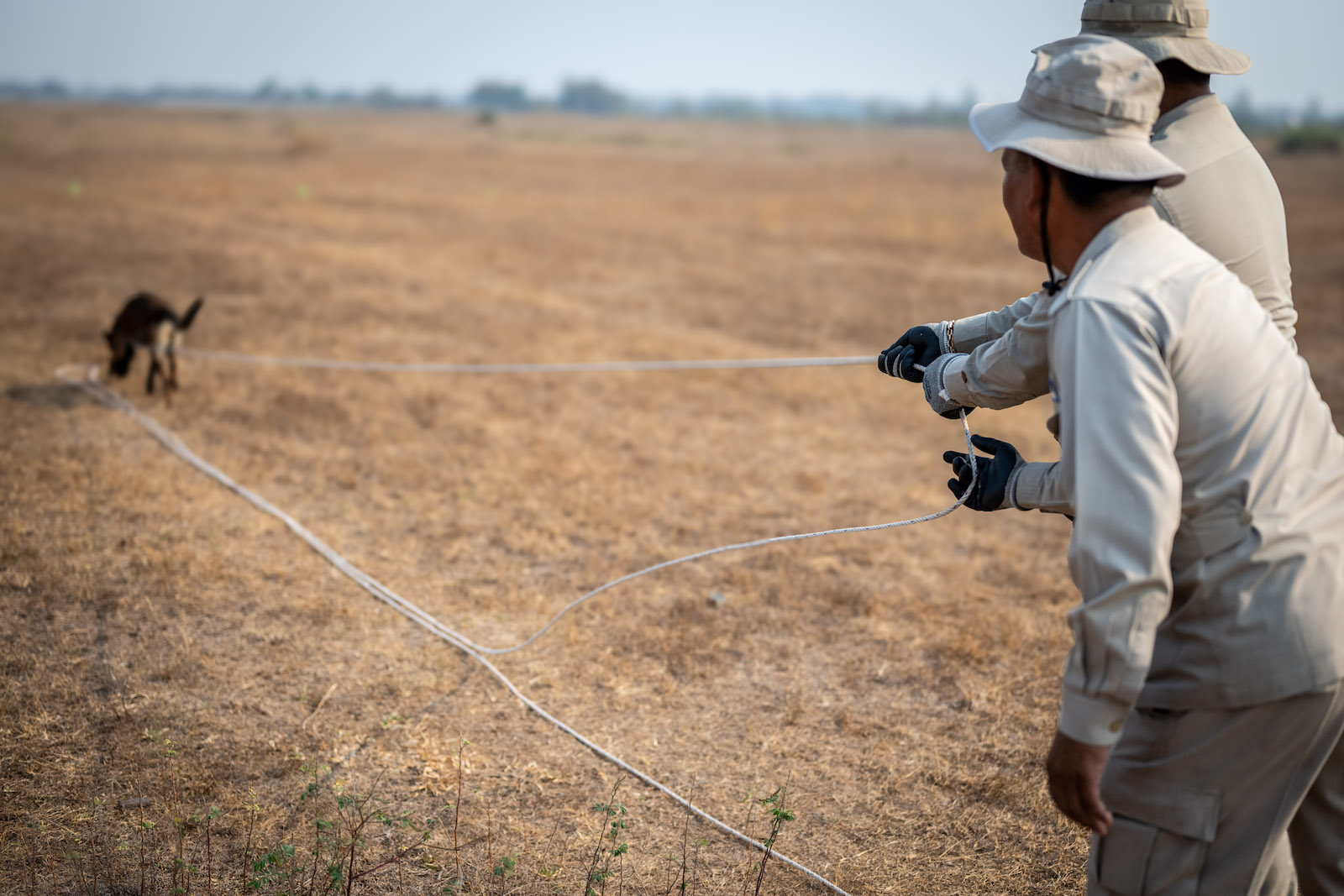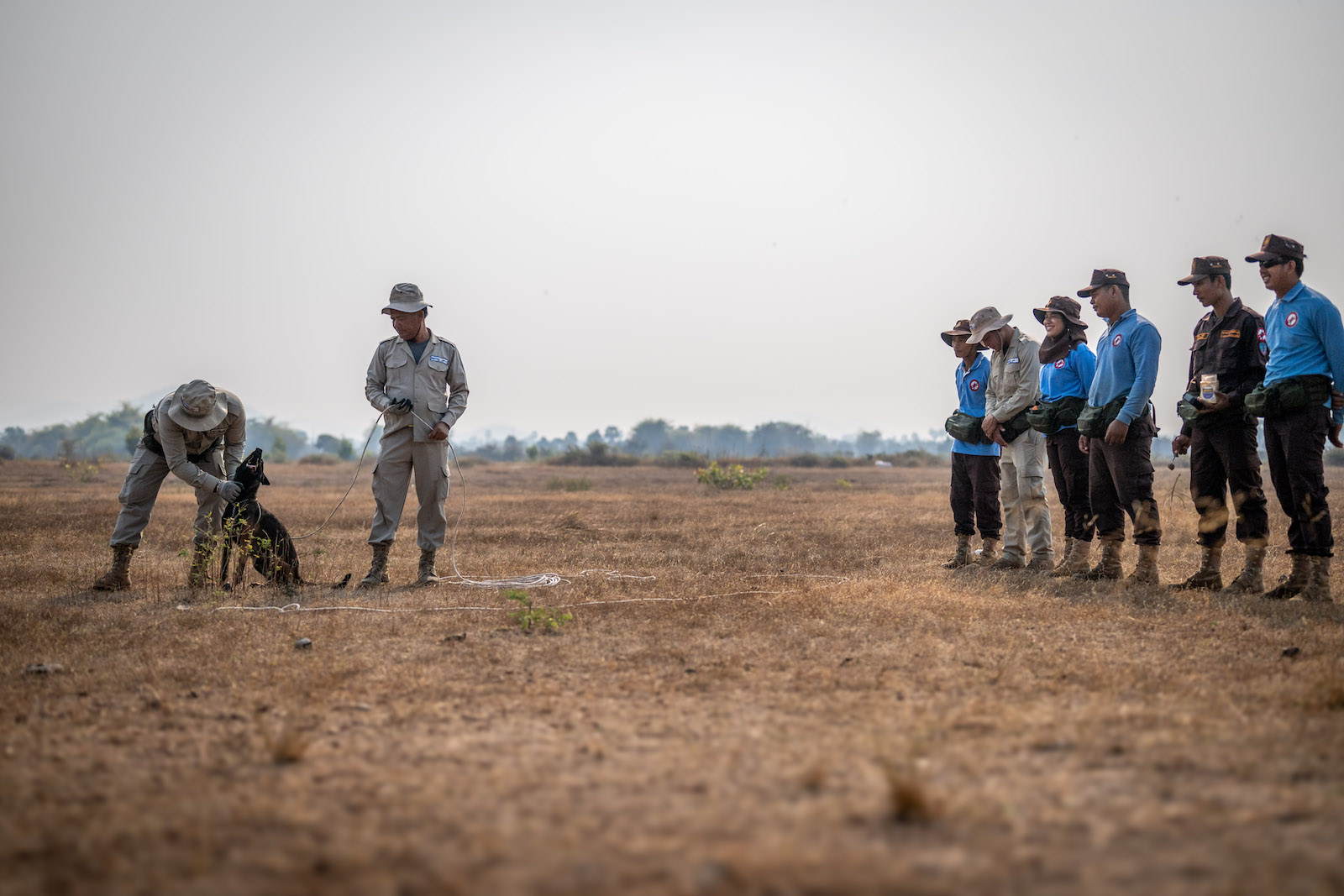In April 2025, twelve of APOPO’s Technical Survey Dogs (TSDs) successfully completed national accreditation in Kampong Chhnang, Cambodia, adding to APOPO’s capacity to safely and efficiently clear land contaminated by landmines and unexploded ordnance.

The accreditation process is rigorous, requiring each dog-handler team to search four 10×10 meter boxes, with potential hidden explosive targets. Handlers must guide their dogs using the Technical Survey Dog technique, ensuring the dogs use precise indications within 1.25 meters of actual targets. Evaluation criteria include the accuracy of the dog’s indications, avoidance of false positives, adherence to search patterns, and effective communication between handler and dog. Only one false indication per box is permitted; exceeding this results in failure.
Two newly trained dogs, Khenny and Khen, began their training at seven months old in July 2024 and have been working with their handlers since January 2025. They achieved accreditation on April 3. The ten experienced dogs underwent a two-week refresher course before their accreditation renewal on April 8.
These newly accredited TSDs are now deployed across Cambodia:
- Four dogs are conducting cluster munition technical survey operations in Ratanakiri Province.
- Four dogs are working in a minefield near Koh Ker Temple in Preah Vihear Province.
- Four dogs are operating in a minefield in Choam Ksan District, Preah Vihear Province.
Technical Survey Dogs play a crucial role in APOPO’s demining efforts. Trained to detect the scent of explosives, they can survey up to 2,000 square meters of land per day, even in challenging terrains with dense vegetation. Unlike metal detectors, TSDs ignore scrap metal, focusing solely on explosive compounds, which significantly accelerates the land clearance process. Their ability to identify contaminated areas without prior vegetation cutting reduces environmental impact and resource expenditure.
APOPO’s TSD program, operational in Cambodia since 2019, has proven effective in identifying hazardous areas, allowing for targeted clearance and the safe return of land to communities.
APOPO in Cambodia

Since launching its operations in Cambodia in 2015, APOPO has worked alongside the Cambodian Mine Action Center (CMAC) and Mines Advisory Group (MAG) to clear land contaminated by landmines and unexploded ordnance. Cambodia remains one of the most heavily mined countries in the world due to decades of conflict. In addition to mine clearance, APOPO works alongside Humanity & Inclusion to support victim assistance, ensuring that those affected by landmines receive essential services and rehabilitation. APOPO’s team, consisting of skilled staff, technical survey dogs, and other cutting-edge methods, focuses on accelerating land release so that affected communities can safely reclaim and use their land. To date, APOPO has helped return hundreds of thousands of square meters to safe use, supporting livelihoods, development, and long-term recovery.
Support our HeroDOGs and their mission by adopting a HeroDOG today. Your contribution aids in training, deployment, and care, directly impacting communities affected by landmines. Learn more and Adopt a HeroDOG.
Together, we can make the world a safer place.
Glossary of Mine Action Terms
Accreditation
A formal evaluation process that certifies a dog-handler team is capable of safely and accurately detecting explosives according to national standards.
Cluster Munitions
A type of explosive weapon that releases smaller submunitions or bomblets over a wide area. Many fail to explode on impact and remain a threat long after conflict ends.
Indications
Signals given by a Technical Survey Dog when it detects the scent of explosives. These signals — such as sitting, or pointing — are trained behaviors that handlers use to identify a possible explosive location.
False Indications
When a dog signals the presence of an explosive where none exists. In accreditation and operations, too many false indications can reduce reliability and may lead to failure or the need for re-training.
False Positives
A type of false indication where a signal is mistakenly interpreted as detecting explosives, often due to environmental distractions, handler miscommunication, or residual scent traces.
Landmine
An explosive device placed under or on the ground, designed to detonate by pressure, proximity, or a tripwire. Landmines can remain active for decades, causing death or injury long after conflicts have ended.
Minefield
An area of land containing one or more buried landmines. These zones are extremely hazardous and require specialized clearance.
Technical Survey (TS)
A detailed investigation used to confirm the presence and location of explosive hazards in a suspected area. It helps focus clearance efforts where they are most needed.
Technical Survey Dogs (TSDs)
Specially trained dogs that use their powerful sense of smell to detect the scent of explosives. They ignore metal and can work efficiently across large areas, including difficult terrain.
Unexploded Ordnance (UXO)
Explosive weapons, such as bombs, grenades, or shells, that were fired, dropped, or launched but failed to detonate as intended. UXO remains volatile and poses a serious risk long after a conflict has ended.

